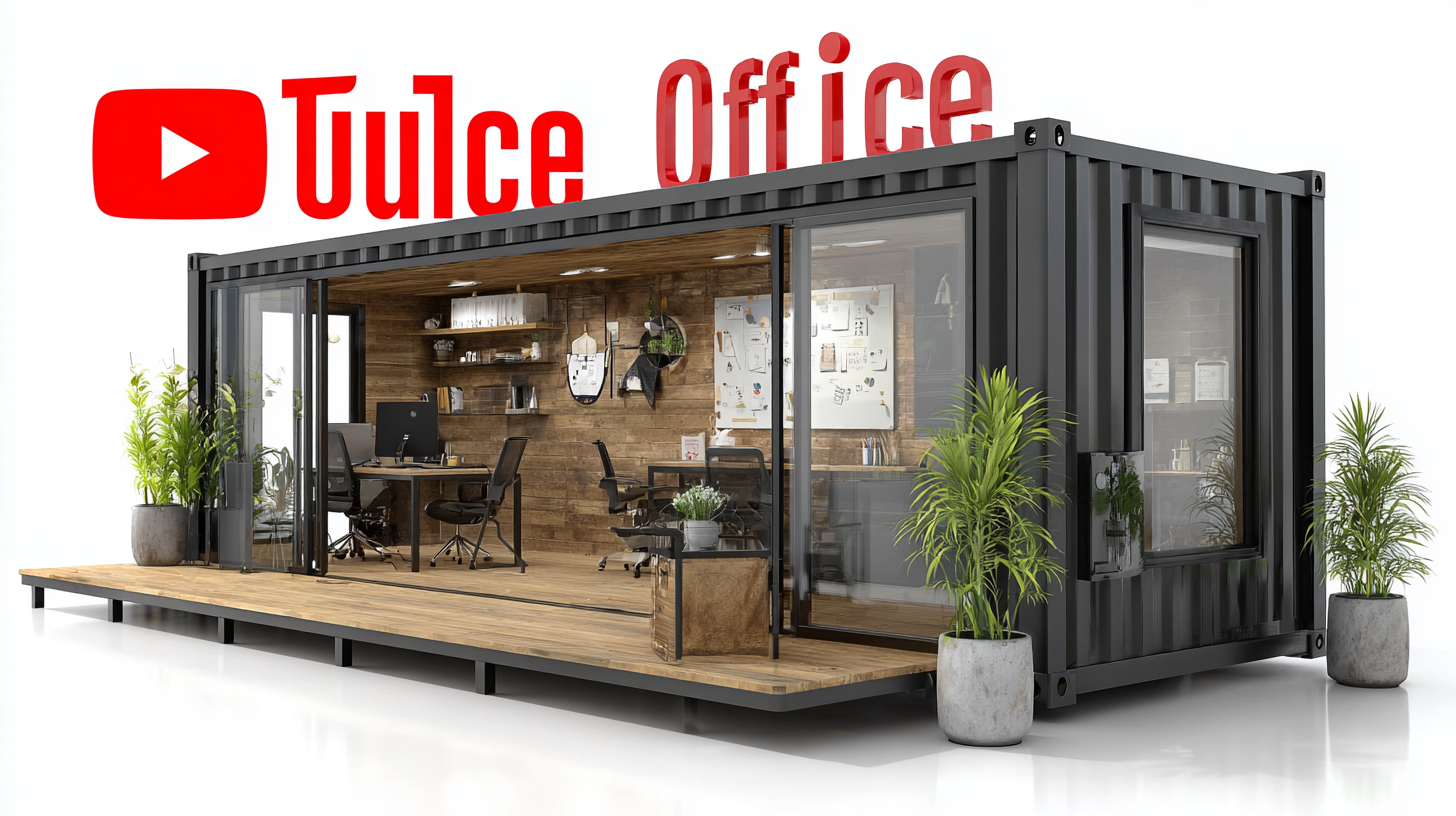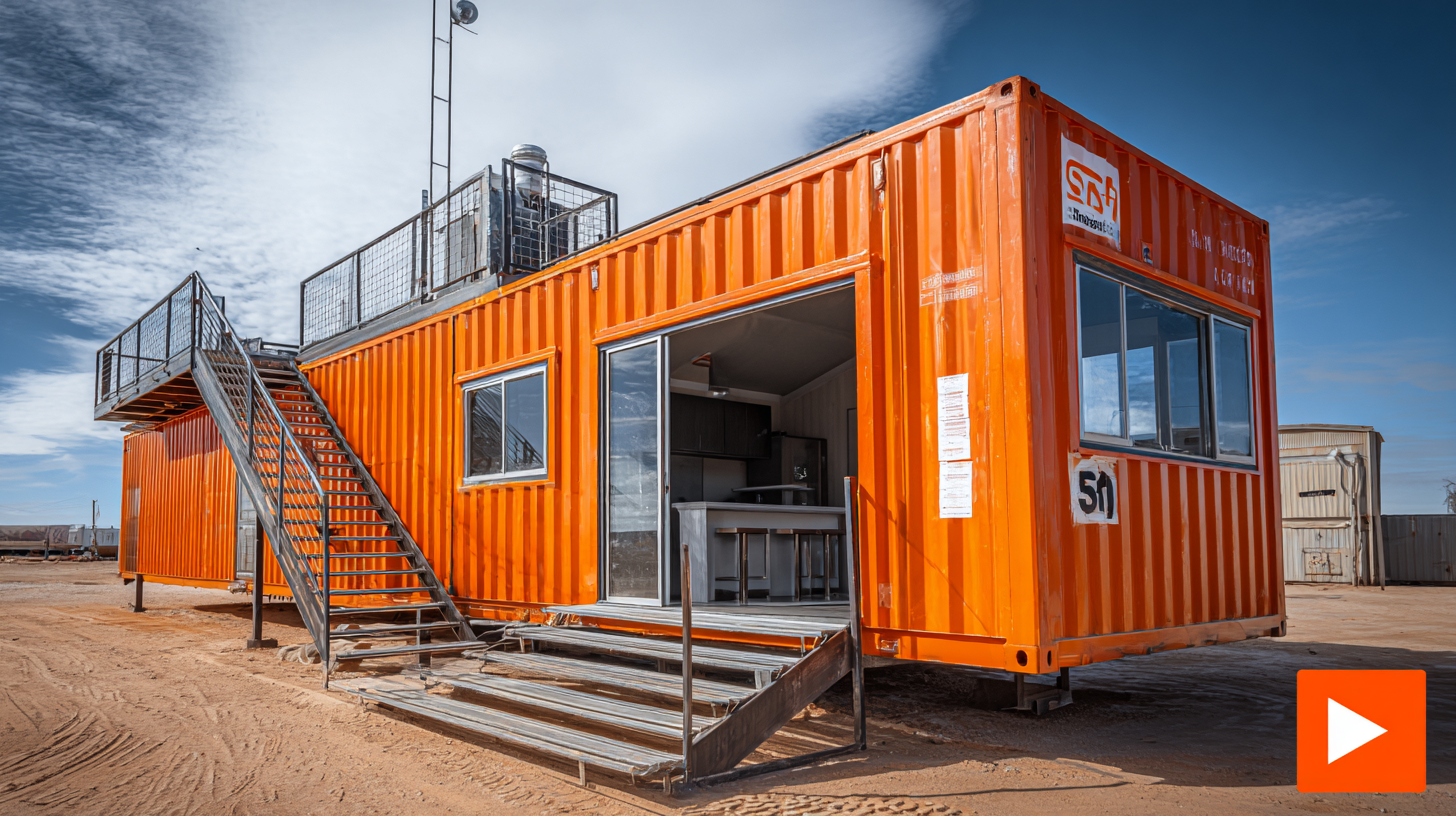Ultimate Checklist for Selecting Your Best Shipping Container Office Setup
As businesses increasingly seek innovative and sustainable solutions, the concept of a
Shipping Container Office has gained significant traction.
According to a recent report by the World Economic Forum,
the global modular construction market, which includes shipping container offices, is expected to reach
$157 billion by 2023, growing at a
CAGR of 6.1%. This surge reflects not only the rising
demand for flexible workspaces but also the growing emphasis on environmentally friendly construction
materials. Shipping container offices offer unique advantages such as
cost-effectiveness,
sustainability, and
rapid setup—factors that align seamlessly
with the evolving needs of modern organizations.
In this ultimate checklist, we will explore essential considerations for selecting the best
Shipping Container Office setup, ensuring
your workspace is not only functional but also tailored to support your organizational
objectives and employee well-being.
Choosing the Right Shipping Container for Your Office Needs
When it comes to choosing the right shipping container for your office needs, several key factors must be considered to ensure a functional and effective workspace. First and foremost, assess the size and layout of your intended workspace. Will it be a single-person office, or do you require multiple workstations? Shipping containers come in various sizes, typically 20-foot and 40-foot options, so selecting one that meets your spatial requirements is essential. Additionally, consider the interior layout, including areas for storage, meeting spaces, or even break rooms, to optimize the available space.

Another crucial aspect to evaluate is the condition of the shipping container itself. Look for containers that are structurally sound and free from rust or damage, as these issues can affect the longevity of your office setup. Insulation and ventilation are also critical, especially if your office will experience extreme temperatures. Ensure your chosen container can be customized with proper insulation, windows, and climate control systems, creating a comfortable environment for productivity. Ultimately, making informed decisions about size, condition, and customization will lead you to the best shipping container for your office needs.
Essential Features to Consider in a Container Office Setup
When selecting a shipping container office setup, it's crucial to consider several essential features that can significantly enhance functionality and comfort. First and foremost, insulation should be a top priority. A well-insulated container office helps regulate temperature, ensuring a comfortable working environment regardless of the weather outside. Options such as spray foam or rigid board insulation can provide both thermal and acoustic benefits, allowing for a peaceful workspace.
Another important feature is the layout and design of the office space. The interior should maximize the available square footage while promoting productivity. Consider incorporating modular furniture that can easily be rearranged to facilitate collaboration or individual work. Additionally, adequate lighting is vital; natural light can elevate mood and energy levels, so installing windows or skylights can create a more pleasant atmosphere. Finally, accessibility to power and data connections cannot be overlooked—ensuring that your container office is equipped with reliable electrical and internet services is fundamental for any modern business operation.
Ultimate Checklist for Selecting Your Best Shipping Container Office Setup
Maximizing Space: Interior Design Tips for Shipping Container Offices
 When designing a shipping container office, maximizing space is crucial for creating a
functional yet comfortable environment. According to a report by the American Institute of Architects,
effective interior design can increase productivity by as much as 15%
in workspaces. This underscores the importance of thoughtful layout and design in container offices,
where space is often limited. Consider an open floor plan that utilizes multifunctional furniture,
allowing for easy reconfiguration of the space to suit various work needs.
When designing a shipping container office, maximizing space is crucial for creating a
functional yet comfortable environment. According to a report by the American Institute of Architects,
effective interior design can increase productivity by as much as 15%
in workspaces. This underscores the importance of thoughtful layout and design in container offices,
where space is often limited. Consider an open floor plan that utilizes multifunctional furniture,
allowing for easy reconfiguration of the space to suit various work needs.
Moreover, utilizing vertical space is essential
in shipping container setups. A National Interior Design Association study highlights that
vertical storage solutions can save up to 30% more space than
traditional layouts. Implementing wall-mounted shelves, slimline cabinets, and creative shelving systems
can help optimize storage while keeping the workspace organized. Integrating natural light
through windows or skylights can also enhance the atmosphere, leading to improved employee
well-being and motivation. By focusing on these interior design strategies, businesses can create
efficient and inviting environments within shipping container offices.
Sustainability and Eco-Friendliness in Container Office Solutions
When considering shipping container offices, sustainability and eco-friendliness are essential factors that increasingly influence choices. Shipping containers, originally designed for transport, allow for innovative repurposing, reducing materials needed for new constructions. By choosing these containers, businesses are not only making a cost-effective decision but are also contributing to the reduction of waste in landfills, as reused materials significantly lower the environmental footprint of office setups.
Additionally, many container office solutions incorporate green technologies, such as solar panels and rainwater harvesting systems, enhancing their eco-friendliness. Insulation plays a crucial role as well; opting for sustainable materials ensures that these spaces are energy-efficient year-round, minimizing reliance on heating and cooling systems. By integrating these sustainable elements, organizations can create a workspace that supports both productivity and environmental responsibility, aligning their operational needs with a commitment to a greener future.
Budgeting and Costs: What to Expect When Setting Up Container Offices
When setting up a shipping container office, understanding budgeting and costs is crucial for a successful project. The first step involves determining your overall budget, which should take into account the acquisition of the container itself, transportation, and necessary modifications. Shipping containers vary in price depending on their condition, size, and age, so it's essential to shop around and find the best deal that fits your budget. Additionally, factor in costs for insulation, electrical wiring, plumbing, and HVAC systems to ensure a comfortable working environment.
Moreover, don't overlook the potential expenses related to permits and site preparation. Zoning laws may require you to obtain specific permits to place a shipping container on your property, which can add to the overall cost. Additionally, preparing the site—leveling the ground, laying a foundation, or connecting utilities—can significantly impact your budget. Always allocate a contingency fund for unexpected expenses that may arise during the setup process. By carefully considering these factors, you can create a well-structured financial plan that supports the successful establishment of your container office.